Two youth advisors share their insights on being involved with a project that used creativity to explore experiences of mental health support.
Tom and Carmen, Young People’s Advisory Group members
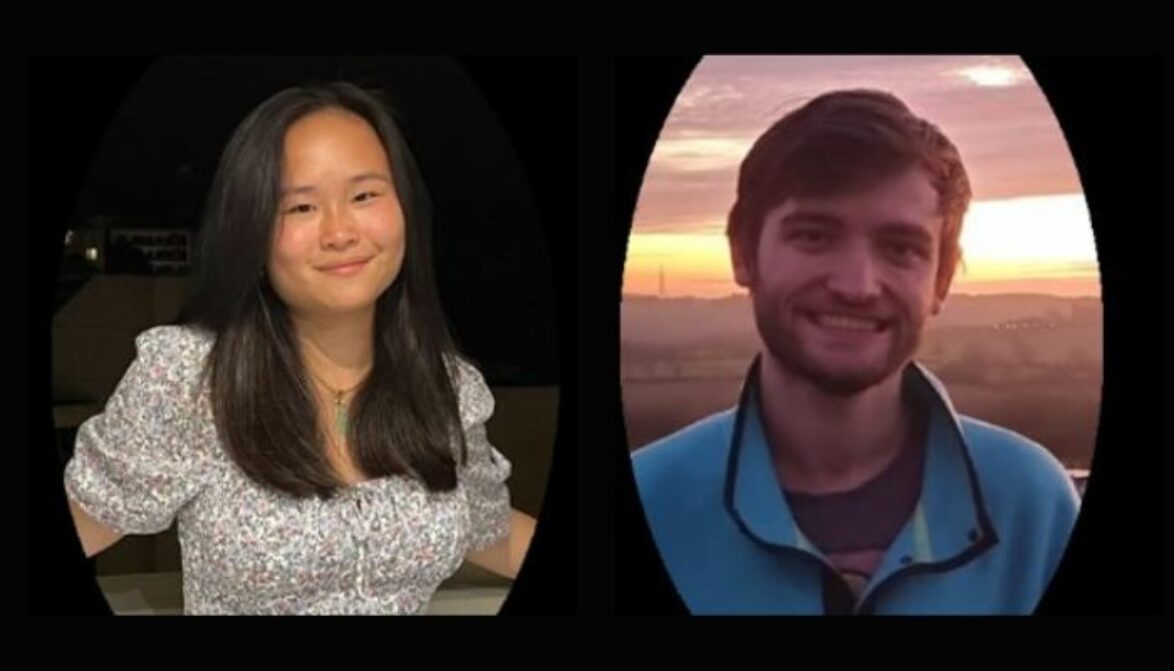
Creating while Waiting (CWW) is a participatory research project led by researchers Meg Attwood and Chris Jarrold from the University of Bristol.
It explored young people’s experiences of wanting, waiting for, and accessing mental health support.
The project was delivered in partnership with the McPin Foundation and Off The Record (OTR) and aimed to better understand young people’s mental health support needs.
Creative reflections on mental health services
During a series of creative workshops, artist/researcher Catherine Lamont-Robinson supported young people to explore their creativity and emotions in response to some prompting questions.
These included things like: “What does good support look/feel/sound like?”; “How could young people’s experiences of mental health support be different?”; and “What are the (missed) opportunities in mental health provision?”.
Using a range of creative materials, young people were invited to reflect on and share their experiences of good support and the missed opportunities within current mental health provision.
These ideas, and the creative outputs young people produced, were shared with the project stakeholder group, which included young person representatives with lived experience, as well as clinicians, mental health practitioners, teachers, and mental health researchers.
It's important to recognise that researchers and young people may not always have matching perspectives and priorities. Engaging in these discussions reveals new insights that enhance the projects.
Involving young people in research
The McPin Young People’s Advisory Group (YPAG) and coordinators shaped the research team’s approach to engaging with young people, challenged their original title for the project – which resulted in a change in title from Preparing to be Well to Creating while Waiting – and provided feedback on example creative workshop approaches.
This blog has been written by two members of the McPin YPAG, Carmen and Tom. They were involved with, advised on and guided the project throughout as youth and stakeholder advisors. Here’s what they had to say:
Tom: I was drawn to this project because of its creative approach to research, the difference in how the research team and artist talked about the project, the previous project the research team conducted and their approach to criticism (feedback) and willingness to change.
I have gained an insight into the use of creative research approaches and how they can be valuable even if you don’t feel as though you are “arty” or “creative”.
This experience has provided me with insight into the effectiveness of creative research methods, even for those who don’t consider themselves particularly artistic or creative.
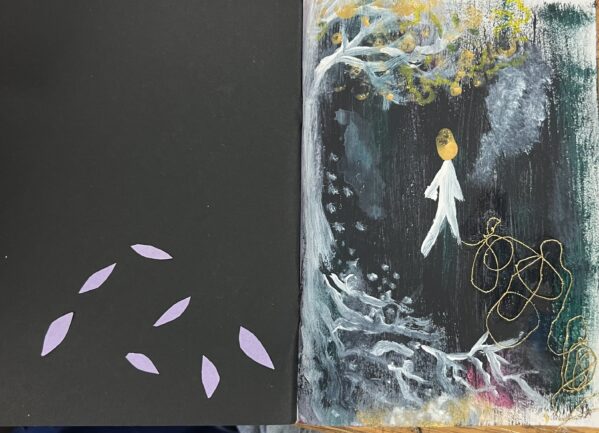
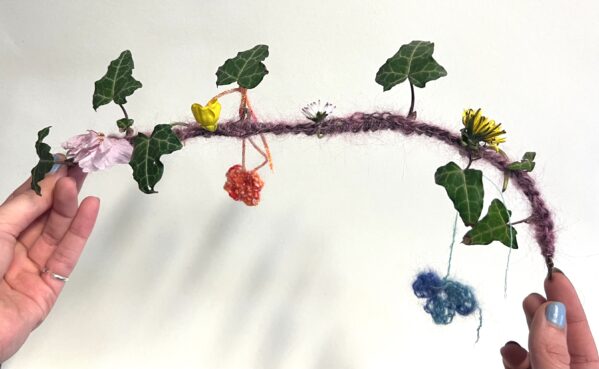
Carmen & Tom: In general, co-production means influencing projects and researchers, prompting fresh perspectives from young people.
The McPin YPAG has provided us with numerous opportunities to take part in these activities, such as urging researchers to place the wellbeing of young people above budget concerns, assessing the ethical and practical aspects of involving parents in research, and fine-tuning ideas that seem good on paper but need minor tweaks to succeed in practice.
It’s important to recognise that researchers and young people may not always have matching perspectives and priorities. Engaging in these discussions reveals new insights that enhance the projects.
As young people, it’s not always straightforward for us to convey our voices and ideas to researchers, even in co-production studies where that’s the intention. However, this was not the case in this instance.
The key to the success of the CWW project lies in the team’s unwavering commitment to full co-production. This encompasses significant actions like altering the project’s name, to smaller measures such as thorough note-taking, and recording meetings to guarantee that feedback isn’t overlooked and to document processes, not just end results.

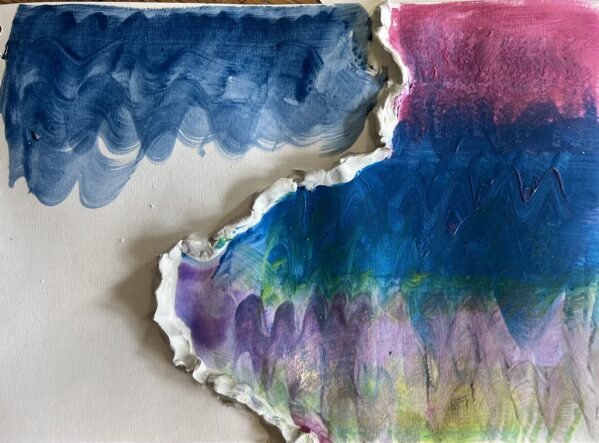
How to encourage involvement in research
Carmen: To encourage greater involvement of young people in research, I believe that promotion should be approached more thoughtfully.
This project serves as an excellent example of such an approach. Getting involved in mental health research can sometimes feel daunting due to stigma, a lack of a formal diagnosis, or other factors.
The way this project was promoted ensured it wasn’t solely aimed at a particular diagnosed group or those with prior treatment experience. This inclusivity allowed anyone interested to participate, resulting in a more diverse range of participants.
Creative vs clinical approaches
Carmen & Tom: The idea of having an alternative means to express our emotions through this project was an appealing prospect and should be explored more widely in research.
This research highlighted the benefits of creative approaches in mental health research. Emotions and feelings can be challenging to put into words, so this provides a different way to gather information about young people’s thoughts.
The range it offers means that there is something accessible to everyone to enable them to contribute and express themselves.
Creative methods provide a ‘gentler’ and less stigmatised approach compared to traditional clinical treatment. This approach also makes therapy accessible to a broader range of people, not just those with a diagnosis or those seeking a specific solution from a medical professional.
Carmen: I have experienced a mix of more traditional therapies, such as cognitive behaviour therapy, and alternative treatments, like music and art therapy. Personally, I have found the more creative approaches to be more beneficial.
It’s been a while since I engaged in those therapies, so being part of the project allowed me to reconnect with that side of myself. Acting on impulse in a safe environment and going with the flow of my creativity was very calming.
While I couldn’t always remember how I reached the result, connecting with nature and spending time doing something while my mind was at ease helped soothe my anxieties. This less structured approach could entail going for a walk and interacting with materials, without any expectations, which reduces stress.
One young participant in a workshop said: ‘I thoroughly enjoyed this experience, so thank you for providing not only physical resources but also for creating a lovely space that allowed for introspection and following our creative processes. The space felt open and conducive to understanding both nature and ourselves.’
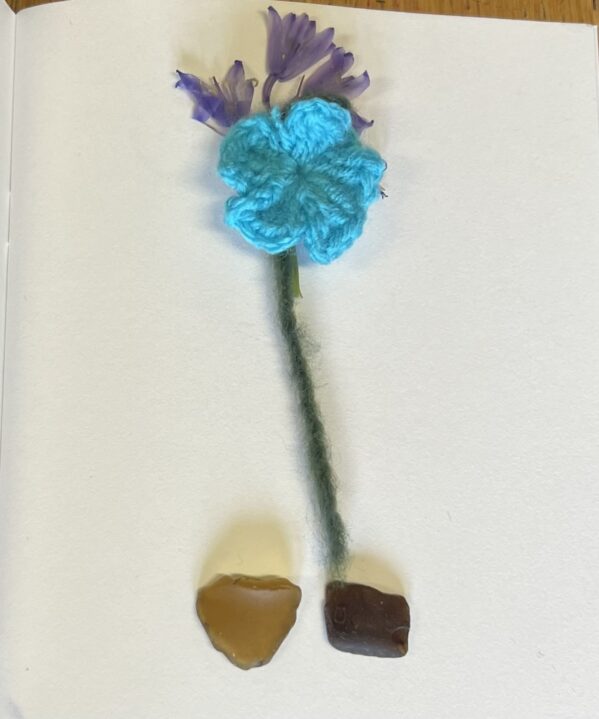
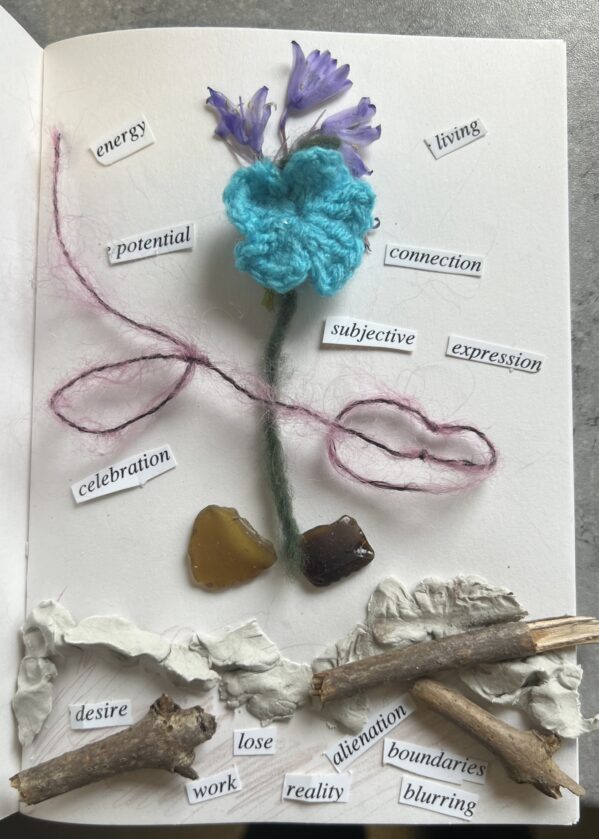
Evoking ‘childlike innocence and calmness’
Carmen & Tom: From our personal experiences, it’s evident that ‘fun’ approaches are often more available to younger children, while older young people, on the cusp of entering adult services, tend to have fewer such opportunities.
This inclination is linked to the observation made by members of the stakeholder group that the creative process often evokes a child-like innocence and calmness. This underscores the importance of guidance from a group leader when engaging with resources, especially for those who may struggle without clear direction.
We are confident in saying that this project is the first we’ve both worked on and thoroughly enjoyed the experience. Exploring emotions in this manner has introduced a fresh perspective for both researchers and clinicians.
Placing young people at the forefront of such research is crucial, and our participation in meetings with other services and organizations as equals has been empowering, ensuring our voices are heard.
Tom and I are fortunate to have research backgrounds due to our degrees. However, even for those without such a background, this project was easily accessible. This inclusivity is a cornerstone of conducting research that benefits everyone and welcomes contributions from individuals from diverse backgrounds.
We’re enthusiastic about the idea that the CWW research team has developed and successfully executed, and we eagerly anticipate the future research .
You can also read the McPin ’10 for 10′ anniversary resources, Co-production at McPin and Involving young people in research for more information on these topics.
If you would like to get involved in research as a young advisor, find out more about the McPin Young Person’s Advisory group and Young People’s Network.
You can also sign up to the McPin newsletter and bulletin to hear about the latest opportunities to get involved in mental health research.
This work was supported by the Elizabeth Blackwell Institute, University of Bristol with funding awarded by PolicyBristol from the Research England QR Policy Support Fund (QR PSF) 2022-24.
The project was delivered in partnership with OTR (Off the Record), a mental health charity supporting young people in Bristol, South Gloucestershire and North Somerset, and the McPin Foundation.
